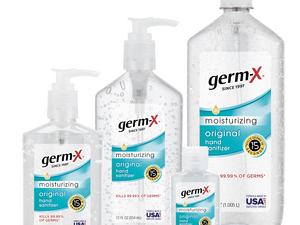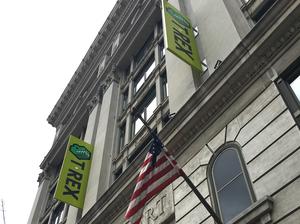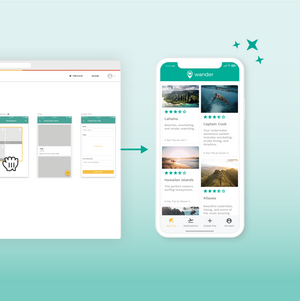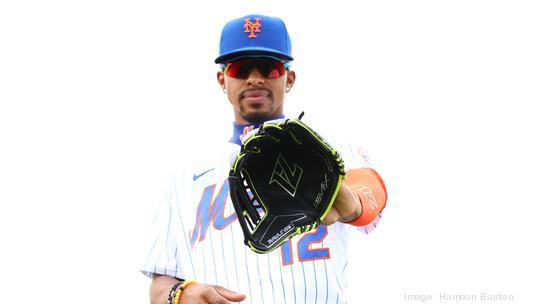
About three years ago, Rawlings Sporting Goods began to think about how it might be able to develop a new type of baseball glove using cutting-edge technology.
The Town & Country-based sports equipment manufacturer soon found its blueprint for the project thanks to a conversation with New York Mets shortstop Francisco Lindor. The four-time All-Star and two-time Gold Glove Award winner wanted a glove that would keep the thumb and the pinky of his glove stiff while also having a soft pocket to trap the baseball.
“Once we identified the problem with Francisco Lindor, then we really had a target," said Ryan Farrar, senior director of ball gloves at Rawlings.
Rawlings this month released its new REV1X series of baseball gloves, which it says were "secretly" developed for years and both inspired by and designed with help from Lindor. The REV1X takes a swing at using 3D printing technology for baseball gloves to offer what Rawlings says is better playability and durability. The REV1X gloves include 3D-printed lattice inserts for the thumb and pinky designed to provide a stiffer feel, a laceless web and heel, and a molded 3D design on the glove back. Rawlings teamed up with 3D printing technology company Carbon and digital manufacturer Fast Radius to develop the glove, which retails for $399.
The Business Journal caught up with Farrar to discuss the new glove and the company’s innovation process. The conversation has been edited for length and clarity.
How did you strategize the development of this new series of gloves? Once the problem was identified, we went to the drawing board with our engineers. We had confines of what we could work in. We knew we needed to make a glove that was different, but also traditional in feel and play of a ball glove. There were certain things we knew we couldn’t touch. We started with, “We can mess with these, we can’t mess with these.” For example, leather lace, leather palm, leather web — all the places where you need the leather so the ball broke in — we didn’t touch. Then we said, “What can we touch?” We knew we needed to look at the padding. We know we can mess with the back of the glove. We know we can mess with the end sides of the glove and how it goes along the wrist. We literally just wrote those on a board and just started attacking each one.
How did you keep the consumer in mind while developing the glove? The first thing is the price point. We knew starting out we couldn’t, even given technology, come out with a $1,000 baseball glove and be like, "Here it is. We’re Rawlings, take it or leave it.” The market above $279, $359, $399, $500, it shrinks dramatically. The price point was super important to us because we are believers in this technology. We wanted to make sure that high school kids had the opportunity to go out and use this high-end glove the same as the pro guys do. It does you no good to make this REV1X that is only for pro players. If you have something, you want to make sure it’s attainable for 13- to 18-year-old baseball players. We met a lot and talked to a lot of customers and consumers about the ceiling of where this could be.
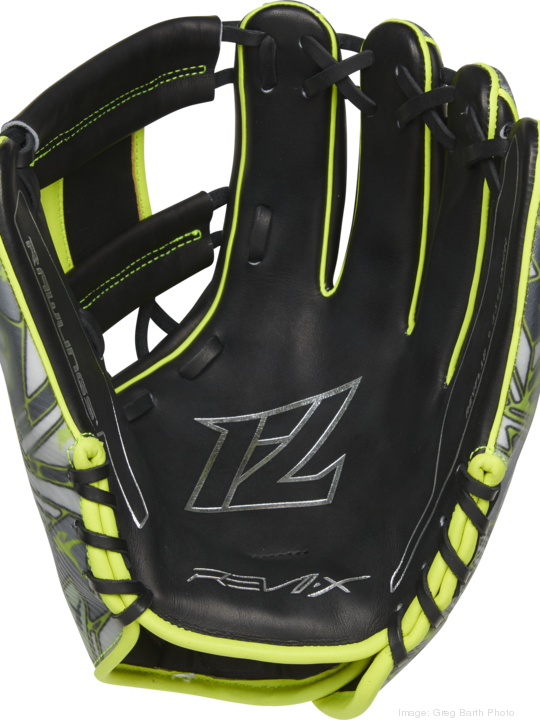
Why is innovation needed for the baseball glove? A lot of people would think there aren't too many ways to tinker with a baseball glove. That’s been the mindset for a very long time. It really hasn’t evolved or there hasn’t been some serious innovation in quite some time. The one thing about the REV1X that is unique in the Carbon pieces is the playability, consistently. It starts out stiffer than padding and then what happens when your glove starts to break in is that padding starts to get soft whereas that Carbon padding has consistent playability throughout the life cycle of the product. It’s super important you know your glove is going to perform like it did yesterday throughout the life. That’s not to say felt and wool are not for gloves. They are very good for gloves and have been used for gloves for a long time. They are the two best materials for it, but the consistent playability for the REV1X is probably the easiest I would explain to someone for it.
Did anything surprise you while developing the new gloves? Yes, in a good way. When you talk about making the thumb and pinky stiff, you’re like, “Oh man, it’s going to take forever to break in.” We didn’t plan on it, we were going to make it a normal break in and it is what it is. But the way the whole package came together, we shipped gloves to Francisco Lindor in spring training of 2021 and he was using them the next day in practice. Usually these guys will order their gloves in October, get them before Christmas and they show up to spring training with a broken-in glove. It does take time — natural materials need to break down a little bit. But between the laceless web and the laceless heel and the way it all came together, the playability is not right out of the bag. But it's very quick, which we did not expect.
How many MLB players are currently using the glove? Using it are four or five, I believe. But we’re making more every day. We’re getting all kinds of requests because as one guy on the team gets it, it’s in his locker and (someone asks) “Hey, what’s this?” Spring training 2022 I think is going to be the launching point because we obviously weren’t face to face in spring training 2021. We’re not sure what’s going to happen in 2022, but there’s more and more of these out there with people using them, so even the chatter at the highest level is really picking up. Now that we’ve launched, we’re getting a lot of requests from minor league players. It wasn’t available to them before. It’s a little bit of a groundswell.

